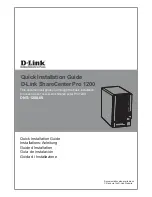
70
After the comparison processes described in
, a spanning tree with Device A as the root
bridge is established, as shown in
.
Figure 19 The final calculated spanning tree
The configuration BPDU forwarding mechanism of STP
The configuration BPDUs of STP are forwarded according to these guidelines:
•
Upon network initiation, every device regards itself as the root bridge and generates
configuration BPDUs with itself as the root. Then it sends the configuration BPDUs at a regular
hello interval.
•
If the root port received a configuration BPDU superior to the configuration BPDU of the port,
the device performs the following tasks:
{
Increases the message age carried in the configuration BPDU.
{
Starts a timer to time the configuration BPDU.
{
Sends this configuration BPDU through the designated port.
•
If a designated port receives a configuration BPDU with a lower priority than its configuration
BPDU, the port immediately responds with its configuration BPDU.
•
If a path fails, the root port on this path no longer receives new configuration BPDUs and the old
configuration BPDUs will be discarded due to timeout. The device generates a configuration
BPDU with itself as the root and sends the BPDUs and TCN BPDUs. This triggers a new
spanning tree calculation process to establish a new path to restore the network connectivity.
However, the newly calculated configuration BPDU cannot be propagated throughout the network
immediately. As a result, the old root ports and designated ports that have not detected the topology
change continue forwarding data along the old path. If the new root ports and designated ports begin
to forward data as soon as they are elected, a temporary loop might occur.
STP timers
The most important timing parameters in STP calculation are forward delay, hello time, and max age.
•
Forward delay
Forward delay is the delay time for port state transition.
A path failure can cause spanning tree recalculation to adapt the spanning tree structure to the
change. However, the resulting new configuration BPDU cannot propagate throughout the
network immediately. If the newly elected root ports and designated ports start to forward data
immediately, a temporary loop will likely occur.
The newly elected root ports or designated ports require twice the forward delay time before
they transit to the forwarding state. This allows the new configuration BPDU to propagate
throughout the network.
•
Hello time
The device sends hello packets at the hello time interval to the neighboring devices to make
sure the paths are fault-free.
















































